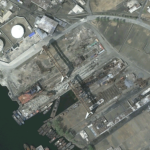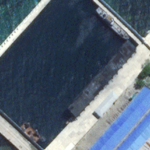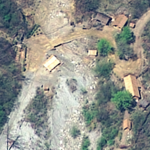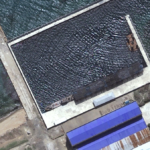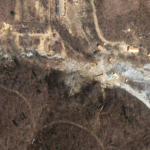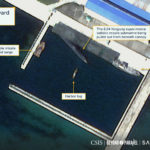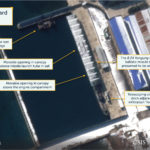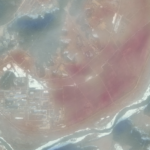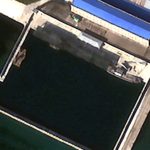June 9, 2022, by Joseph S. Bermudez Jr., Victor Cha and Jennifer Jun—
Satellite imagery collected from the last several months show intermittent activity on North Korea’s second submersible missile test stand barge located in Nampo Navy Shipyard on the west coast. .. Satellite imagery collected from the last several months show intermittent activity on North Korea’s second…
June 1, 2022, by Joseph S. Bermudez Jr., Victor Cha and Jennifer Jun—
Recent satellite imagery provides the first views of the secure boat basin at Sinpo South Shipyard since the SLBM test launch on May 7. The images show the submersible missile test stand barge has exchanged positions with the infiltration mothership once again.
May 17, 2022, by Joseph S. Bermudez Jr., Victor Cha and Jennifer Jun—
A high off-nadir satellite imagery collected on May 17, 2022, provides a unique view of the ongoing activity outside the new portal to Tunnel No. 3 (South Portal) and in the main administration and support area of the Punggye-ri Nuclear Test Site... A high off-nadir satellite imagery collected on May 17, 2022, provides a unique and current…
May 2, 2022, by Joseph S. Bermudez Jr., Victor Cha and Jennifer Jun—
Satellite image collected on April 20 provides one of the most detailed and current views of the Sinpo Shipyard, which houses North Korea's experimental ballistic missile submarine and submersible test stand barge... Satellite image collected on April 20, 2022, provides one of the most detailed and current…
April 28, 2022, by Joseph S. Bermudez Jr., Victor Cha and Jennifer Jun—
Recent satellite image shows indications of ongoing construction work near and inside Tunnel No. 3 at the Punggye-ri Nuclear Testing Site... Satellite image collected on April 25, 2022, provides one of the most detailed and current views of continued activity at the Punggye-ri Nuclear Test Facility....
April 13, 2022, by Joseph S. Bermudez Jr., Victor Cha and Jennifer Jun—
While minor changes have taken place at Sohae Satellite Launching Station over the years, satellite imagery and other sources indicate that the roots of the recently announced modernization and expansion program likely date back to 2019. .. While minor changes have taken place at Sohae Satellite Launching Station over the years, satellite…
March 29, 2022, by Joseph S. Bermudez Jr., Victor Cha and Jennifer Jun—
Recent satellite image shows unusual movement of the 8.24 Yongung experimental ballistic missile submarine (SSBA) within the secure boat basin at North Korea's Sinpo South Shipyard... Left: A February 24, 2022, view of the secure boat basin at the Sinpo South…
February 23, 2022, by Joseph S. Bermudez Jr. and Victor Cha—
The telescoping crane that appeared in Sinpo South Shipyard's secure boat basin in early January is still present. It is unclear if the telescoping crane is an indicator of continued work on 8.24 Yongung SSBA, new work being undertaken on the infiltration mothership, an ongoing deception program, or a combination of these and other reasons.
February 18, 2022, by Joseph S. Bermudez Jr., Victor Cha, Andy Dinville and Jennifer Jun—
LANDSAT 7 and LANDSAT 8 thermal infrared satellite imagery in January and February show that warm water is being discharged from the 5MWe reactor at Yongbyon, confirming that the reactor and its cooling system are in operation. Thermal patterns from the same period suggests that the IRT-DPRK reactor, the Radiochemistry Laboratory, and the centrifuge plant are occupied, but not necessarily operational, and not in a state of shutdown.
